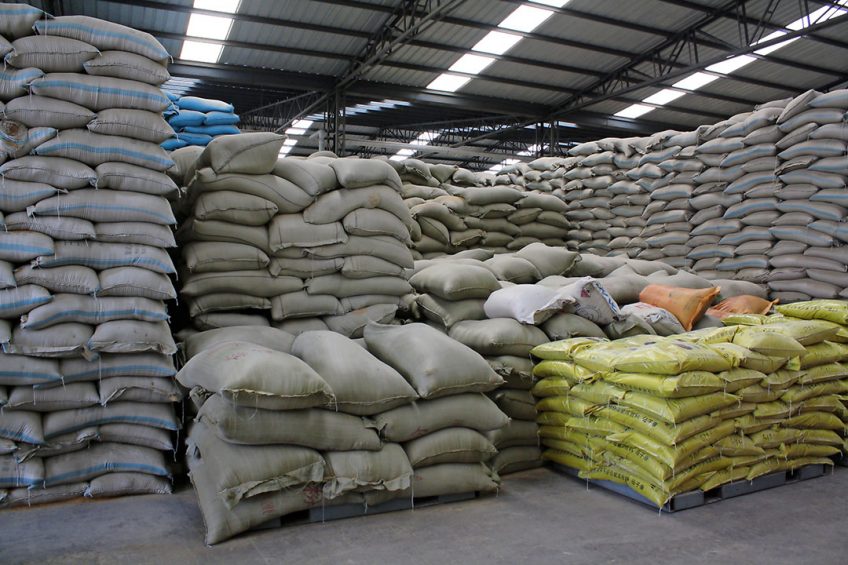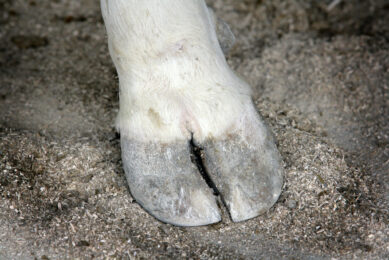How does ASFv spread within a feed mill?

African Swine Fever virus (ASFv) could become widely distributed in a feed manufacturing environment, would the virus be introduced. That was observed during an experimental introduction.
The research was carried out by scientists of Kansas State University in the United States, which was published in the journal Kansas Agricultural Experiment Station Research Reports. The team aimed to better understand the role the feed manufacturing industry may have in regard to potential distribution of ASFv.
Constructing a pilot-scale feed mill
In order to figure out how the virus spread, a pilot-scale feed mill consisting of a mixer, bucket elevator, and relevant spouting was constructed in the Biosafety Level-3 Ag animal room at the Biosecurity Research Institute at Kansas State University.
The team swabbed 18 different sites on the equipment and in the room to evaluate environmental contamination before and after introduction of ASFv-inoculated feedstuff. First, a batch of feed was manufactured through the system to confirm the feed mill was ASFv negative; then a feedstuff inoculated with ASFv was added into the mixer and manufactured with other, non-infected ingredients.
Taking environmental swabs after each batch of feed
Ingredients were mixed and discharged through the bucket elevator. Subsequently, the team manufactured 4 additional ASFv-free batches of feed. Environmental swabs were collected after each batch of feed was discharged with locations categorised into 4 zones:
A. Feed contact surface;
B. Non-feed contact surface, but less than 3.2 ft (1m) away from feed;
C. Non-feed contact surface, but more than 3.2 ft (1m) from feed; and
D. Transient surfaces such as worker shoes.
As might be expected, environmental swabs collected prior to ASFv inoculation of feed were negative for ASFv DNA. Environmental swabs collected after the manufacture of ASFv-inoculated feed resulted in contamination of zones A-D.
The scientists wrote: “In this setup, there was no evidence of sampling zone × batch interaction and no difference in the proportion of ASFv positive reactions between sampling location or batch of feed throughout the experiment. That indicates that once ASFv contamination entered the facility, the contamination quickly becomes widespread and persists on the environmental surfaces, even during manufacturing of subsequent batches of ASFv non-inoculated feed. Samples from transient surfaces (Zone D) had more detectable ASFv compared to all other surfaces, indicating high level of ASFv contamination.”

Track the movement of African Swine Fever
For everything you need to know about ASF, from the latest outbreaks to controls stay up to-date…
Lower levels of ASFv contamination
The authors wrote: “Samples collected after manufacturing sequence 3 had less detectable ASFv compared to samples collected immediately following manufacture of the ASFv-inoculated batch of feed, indicating lower levels of ASFv contamination in subsequent repeats of the feed production process.”
In summary, the researchers concluded, once ASFv was experimentally introduced into a feed manufacturing environment, the virus became widely distributed throughout the facility with only minor changes in detection frequency as subsequent batches of feed were produced.
The article in Kansas Agricultural Experiment Station Research Reports was authored by C.G. Elijah, J.D. Trujillo, C.K. Jones, N.N. Gaudreault, C.R. Stark, K.R. Cool, C.B. Paulk, T. Kwon, J.C. Woodworth, I. Morozov, J.T. Gebhardt and J.A. Richt, Kansas State University, Manhattan, KS, United States.












